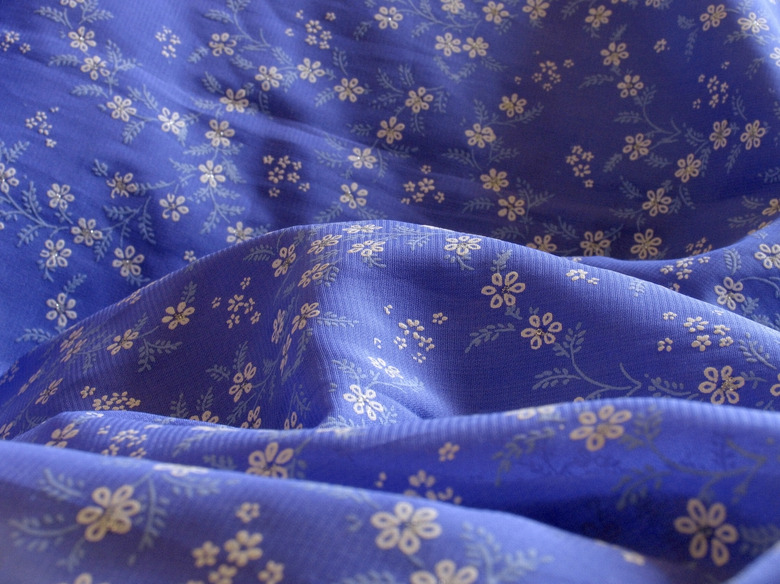Properties Of Polyester Fabrics
It's in old recording tape, home furnishings, plastic bottles, food packages, electrical insulation, 1970s leisure suits and maybe in your closet. Polyester, a synthetic polymer manufactured in laboratories, has several practical applications in the fabric production world. Special chemical properties give polyester its unique and useful properties.
Polymers: A Molecular Primer
Polymers: A Molecular Primer
The word "polymer" consists of the root "poly," which means "many," and "mer," a stem that stands for "part." Hence, a polymer is a large structure that consists of many parts chained together sequentially; those parts are monomers. Polymer molecules are large and may contain thousands of times more atoms than water molecules. Natural polymers include latex, starches and proteins. Scientists combine the monomers ethylene glycol and dimethyl terephthalate to form chains that produce polyester.
Polyester: The "Magic" Material
Polyester: The "Magic" Material
Fabrics made from polyester fabrics are strong, durable and easy to care for. Spill grape juice on a cotton garment and you've got a major cleaning issue, but that problem doesn't exist with polyester because its moisture resistance helps the fabric avoid stains. Quick drying, polyester is easily washable and resistant to mildew, abrasion and most chemicals. Your ironing time diminishes with each polyester fabric you acquire, as polyester does not wrinkle. Because it has a relatively high resistance to light and ultraviolet radiation degradation, polyester is a good material to use in boat covers and fabrics that receive high sun exposure.
The Science Behind the Magic
The Science Behind the Magic
Large molecule size helps gives polyester and other polymers unusual properties. These molecules are so big that they intermingle, making it difficult to separate them into individual units. Because the molecules are hard to pull apart, polyester fabrics are strong and resist breakage. Polyester's strength and durability make it a good choice for outerwear garments. Manufacturers can make a jacket that is warmer by adding insulating properties to its fibers. Polyester's properties also enable garment makers to treat the fabric to add permanent creases and pleats to make permanent-press garments.
When Fabrics Collide: Polyester Blends
When Fabrics Collide: Polyester Blends
Combine polyester with other fibers when you want to create fabrics that have interesting new properties. For instance, when you blend cotton and polyester, the resultant fabric acquires features from both materials. Cotton in the fabric keeps it comfortable and increases absorbency; its polyester component ensures that the fabric remains wrinkle-free and retains its shape. In a polyester-wool blend, the polyester helps create a stronger, more durable wool garment, while the wool provides elasticity and good draping capabilities.
Cite This Article
MLA
Lee, Kevin. "Properties Of Polyester Fabrics" sciencing.com, https://www.sciencing.com/properties-polyester-fabrics-5087331/. 24 April 2017.
APA
Lee, Kevin. (2017, April 24). Properties Of Polyester Fabrics. sciencing.com. Retrieved from https://www.sciencing.com/properties-polyester-fabrics-5087331/
Chicago
Lee, Kevin. Properties Of Polyester Fabrics last modified March 24, 2022. https://www.sciencing.com/properties-polyester-fabrics-5087331/
